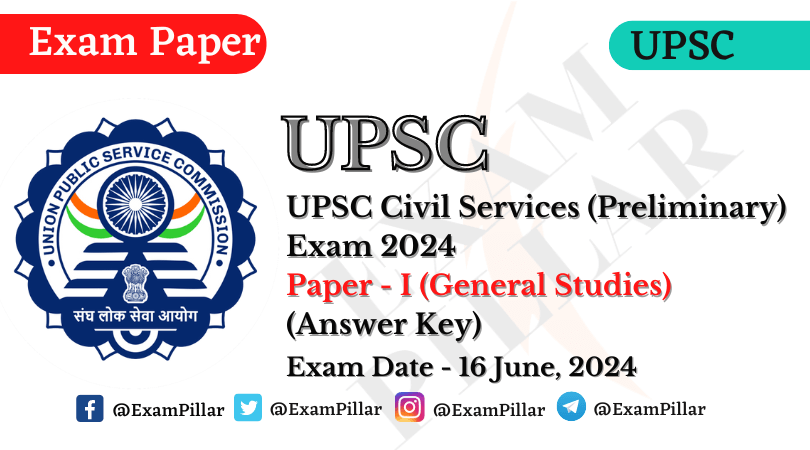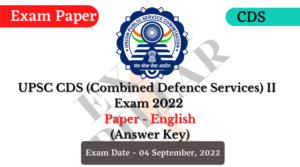11. Consider the following airports:
1. Donyi Polo Airport
2. Kushinagar International Airport
3. Vijayawada International Airport
In the recent past, which of the above have been constructed as Greenfield projects?
(a) 1 and 2 only
(b) 2 and 3 only
(c) 1 and 3 only
(d) 1, 2 and 3
Explanation – Click To Show Answer/Hide
12. With reference to “water vapour”, which of the following statements is/are correct?
1. It is a gas, the amount of which decreases with altitude.
2. Its percentage is maximum at the poles.
Select the answer using the code given below:
(a) 1 only
(b) 2 only
(c) Both 1 and 2
(d) Neither 1 nor 2
Explanation – Click To Show Answer/Hide
13. Consider the following description:
1. Annual and daily range of temperatures is low.
2. Precipitation occurs throughout the year.
3. Precipitation varies between 50 cm – 250 cm.
What is this type of climate?
(a) Equatorial climate
(b) China type climate
(c) Humid subtropical climate
(d) Marine West coast climate
Explanation – Marine West coast climate: Click To Show Answer/Hide
14. With reference to “Coriolis force”, which of the following statements is/are correct?
1. It increases with increase in wind velocity.
2. It is maximum at the poles and is absent at the equator.
Select the answer using the code given below:
(a) 1 only
(b) 2 only
(c) Both 1 and 2
(d) Neither 1 nor 2
Explanation – Click To Show Answer/Hide
15. On June 21 every year, which of the following latitude(s) experience(s) a sunlight of more than 12 hours?
1. Equator
2. Tropic of Cancer
3. Tropic of Capricorn
4. Arctic Circle
Select the correct answer using the code given below:
(a) 1 only
(b) 2 only
(c) 3 and 4
(d) 2 and 4
Explanation – Click To Show Answer/Hide
16. One of the following regions has the world’s largest tropical peatland, which holds about three years worth of global carbon emissions from fossil fuels; and the possible destruction of which can exert detrimental effect on the global climate. Which one of the following denotes that region?
(a) Amazon Basin
(b) Congo Basin
(c) Kikori Basin
(d) Rio de la Plata Basin
Explanation – Click To Show Answer/Hide
17. With reference to perfluoroalkyl and polyfluoroalkyl substances (PFAS) that are used in making many consumer products, consider the following statements:
1. PFAS are found to be widespread in drinking water, food and food packaging materials.
2. PFAS are not easily degraded in the environment.
3. Persistent exposure to PFAS can lead to bioaccumulation in animal bodies.
Which of the statements given above are correct?
(a) 1 and 2 only
(b) 2 and 3 only
(c) 1 and 3 only
(d) 1, 2 and 3
Explanation – Click To Show Answer/Hide
18. Consider the following:
1. Carabid beetles
2. Centipedes
3. Flies
4. Termites
5. Wasps
Parasitoid species are found in how many of the above kind of organisms?
(a) Only two
(b) Only three
(c) Only four
(d) All five
Explanation – Click To Show Answer/Hide
19. Consider the following plants:
1. Groundnut
2. Horse-gram
3. Soybean
How many of the above belong to the pea family?
(a) Only one
(b) Only two
(c) All three
(d) None
Explanation:Click To Show Answer/Hide
20. Consider the following statements:
Statement-I – The Indian Flying Fox is placed under the “vermin” category in the Wild Live (Protection) Act, 1972.
Statement-II – The Indian Flying Fox feeds on the blood of other animals.
Which one of the following is correct in respect of the above statements?
(a) Both Statement-I and Statement-II are correct and Statement-II explains Statement-I
(b) Both Statement-I and Statement-II are correct, but Statement-II does not explain Statement-I
(c) Statement-I is correct, but Statement-II is incorrect
(d) Statement-I is incorrect, but Statement-II is correct
Explanation – Click To Show Answer/Hide








